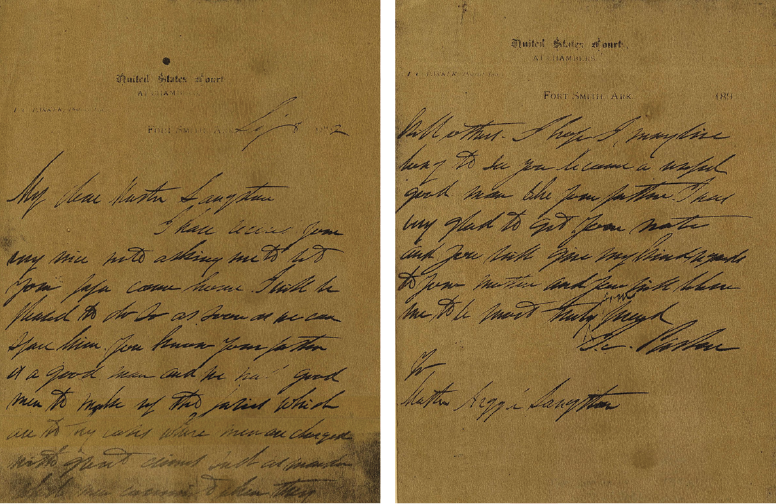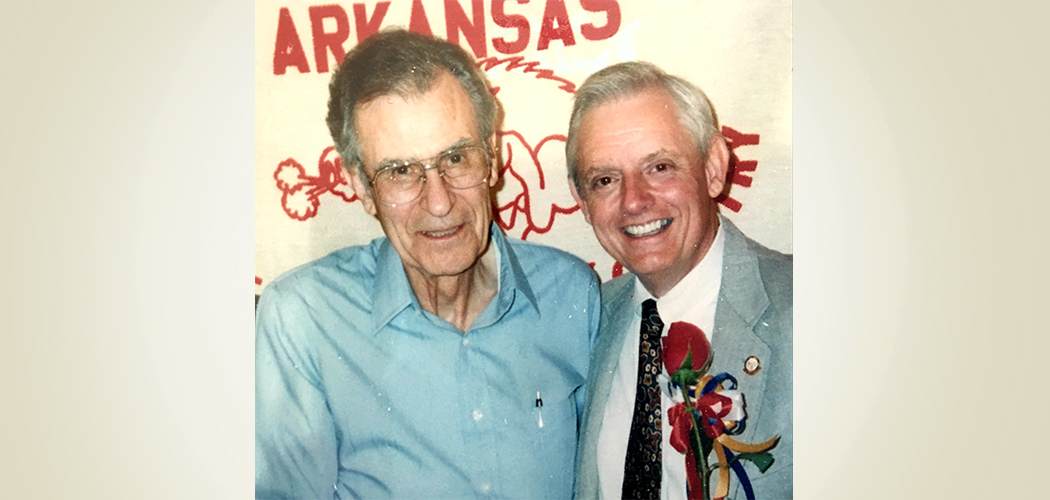[title subtitle=”words: Tom Wing, Historian and Author
images: Tom Wing and the Fort Smith National Historic Site”][/title]
In 1996 I started a seasonal job as a park ranger at Fort Smith National Historic Site that would change my life and career. A couple of years later I was fortunate enough to be offered an opportunity to work for the NPS full time. The sheer volume of history, just related to both forts and the Federal Court from 1817-1896 is astounding. Immediately I knew I had a lot to learn. I asked numerous questions in those early days, usually in pursuit of somewhat obscure details that would elicit the answer from exasperated staff members, “I don’t know, call Guy Nichols!”
Guy Nichols was born in Knoxville, Arkansas, in 1920. As a young man, he served in the Navy in World War II, again in Korea and then finally in Vietnam completing a twenty-year career. He joined the National Park Service at the newly established Fort Smith National Historic Site upon retirement spending the next thirty years giving tours, doing research and telling stories about Fort Smith. Many a student would sit on the gallows, or in the “Hell on the Border Jail” while he interpreted the past. Guy became in that time, the “institutional memory” of the site, and an authority on Fort Smith’s history. He retired from the NPS by the time I came along but attended luncheons and other functions at the park regularly. I called him many times, and over coffee, or lunch he told me stories of the who, how, when, and why things happened at Fort Smith.
While reworking the exhibits after the tornado damage of 1996, we planned to use a letter from the files, written by Judge Parker to a young boy from West Fork, Arkansas. The boy’s unnamed father was serving on the jury of the murder case of Lewis Holder. Holder was eventually found guilty, appealed to the Supreme Court, and his case was upheld. He was executed in 1893. The boy who wrote the letter, obviously missing his father, and with his mother’s permission and assistance, addressed the Judge concerning the matter. The boy’s letter has not been found, but Parker’s response is of great historical value. Parker took time out of a busy schedule that likely included day and night sessions of court to write this letter on his court stationery:
September 6, 1892
My Dear Master Langston,
I have received your very nice note, asking me to let your papa come home. I will be pleased to do so as soon as we can spare him. You know your father is a good man, and we need good men to make up the juries, which are to try cases where men are charged with great crimes such as murder, which men commit when they kill others. I hope I may live long to see you become a useful good man like your father. I was very glad to get your note, you will give my most kind regards to your mother, and you will believe me to be most truly your friend.
I.C. Parker
The letter shows another side of the often maligned and so-called “Hanging Judge.”

Upon reading it the first time, I wanted to know how and when it was acquired by the historic site. After exhausting the research files and staff, I had no other option than to “call Guy Nichols.” Guy remembered the story well. As he was taking down the flags in the parking lot for the night, an elderly man approached. He asked, “Hey, Mr. Park Ranger, have you ever heard a story about Judge Parker writing a little boy a letter?” Ranger Nichols responded that he had seen a reference to the story but had never seen the letter and wondered if it was myth and legend. The man then reached into his pocket and presented a copy of the letter and introduced himself as Argile Langston, the boy whose letter garnered a response from the Judge. Ranger Nichols had the presence of mind to ask a few questions, among them, he inquired about Mr. Langston’s profession. Mr. Langston replied, “I was a lawyer until I retired.”
It is impossible to know how much credit Judge Parker should get for Argile Langston’s decision to practice law, but I’d speculate that letter from the Judge’s desk had a lasting impact.
As for Guy Nichols, he was my friend, who was always patient with my questions, with whom I shared a great love of the past, and who made history himself, serving our country. He also devoted a large part of his life to helping people connect to the history of Fort Smith. Guy’s story of meeting Argile Langston changed my view of Judge Parker, but also made me look forward to taking the flag down each day and the daily interactions with visitors whose stories were connected to Fort Smith.




